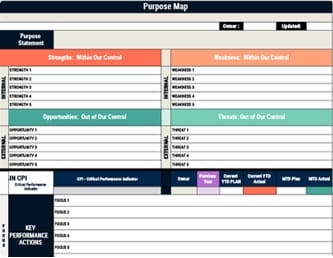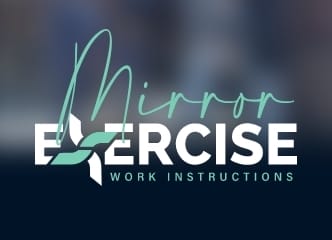You’re about to map performance management software to real needs, so start by clarifying what it is, how it differs from personal goal tools, and which features actually drive outcomes. You’ll learn how goal setting, continuous feedback, and custom metrics align teams with strategy, integrate with HR data, and support coaching. We’ll also cover implementation tactics—buy‑in, training, change management—and selection criteria, so you can avoid common pitfalls and choose a platform that truly moves the needle…
Key Takeaways
- Centralize goal setting, progress tracking, and evaluations to align individual objectives with organizational strategy and standardize performance metrics.
- Use real-time analytics and automated reporting to surface trends, inform decisions, and trigger timely course corrections.
- Integrate with HRIS/payroll to automate data collection, reduce errors, and maintain consistent, accurate records across systems.
- Enable continuous feedback and customizable evaluations to support development, ensure fairness, and drive ongoing performance improvement.
- Ensure successful implementation through leadership sponsorship, clear roles and timelines, role-based training, and adoption tracking with iterative improvements.
What Is Performance Management Software?
Performance management software is a B2B SaaS platform that centralizes how organizations set goals, track progress, and evaluate results, giving you a clear, real-time view of both organizational and individual performance.
You use it to connect goal setting with performance tracking and employee evaluations, so every initiative ties to strategic objectives. By standardizing performance metrics and enabling continuous feedback, the system clarifies expectations and highlights what’s working.
It pulls information through automated data collection from HR systems and other tools to reduce manual errors and keep reports current. You can adjust targets quickly, monitor organizational performance, and surface risks early.
With customizable dashboards and reports, you gain accountability and speed, freeing time for higher-value conversations that drive measurable outcomes.
Organizational vs. Personal Performance Management
While both operate on the same platform, organizational and personal performance management serve different but connected purposes that you need to design in tandem.
Organizational performance management sets strategic objectives, translates them into measurable outcomes, and keeps departments focused on shared organizational goals. Personal performance management links individual objectives and competencies to those priorities, ensuring employee performance contributes directly to enterprise results.
Align strategy and people: connect organizational goals to individual competencies to drive enterprise results.
Use performance management systems to align strategy and execution: performance management software centralizes goal setting, aligning objectives across levels, and supports continuous feedback and timely employee evaluation.
At the individual level, you’ll surface skill gaps and target development opportunities, while at the organizational level, you’ll monitor progress and adjust resource allocation.
When both layers are integrated and tracked in real time, companies are more likely to outperform financially.
Core Features You Should Expect
Blueprints matter here, because the right performance management software should give you goal setting and tracking that align individual objectives with organizational priorities, customizable evaluation tools that apply consistent, metric-based assessments across roles, and continuous feedback mechanisms that keep managers and employees communicating in real time.
Expect clear workflows that translate organizational objectives into team and individual targets, with visible progress and adjusted performance expectations as work evolves. Use customizable employee evaluation forms to tailor competencies, weights, and rating scales, ensuring fair performance reviews across departments.
Leverage continuous feedback to capture coaching notes, recognition, and course corrections between cycles. Demand robust data analytics for trend spotting, skill-gap identification, and actionable dashboards on employee performance.
Finally, verify integration capabilities with HRIS, payroll, and learning systems to unify data, reduce errors, and streamline reporting.
Building a Dynamic, Adaptable Strategy
Even as priorities shift and external conditions evolve, you can keep your strategy relevant by using performance management software to translate change into concrete, trackable actions.
Use dynamic strategy development to connect initiatives to organizational goals, then adjust quickly with real-time updates when markets move or crises emerge. Rely on performance data captured automatically, so you can drill into drivers, validate assumptions, and reallocate resources without guesswork.
Embed continuous measurement in your cadence, using automated reporting to reduce manual effort and surface timely insights for strategic discussions.
With an agile approach, establish clear decision triggers—like threshold metrics or leading indicators—that prompt immediate course corrections. Link projects to outcomes, set owners and timelines, and revise priorities as evidence evolves, building an adaptable strategy that remains aligned and actionable.
Measuring Progress, Tracking Projects, and Reporting
How do you turn strategy into visible, day‑to‑day progress that anyone can verify? Use performance management software to centralize data and keep measuring progress against organizational goals in real time.
By pulling information from multiple systems, it lets you start tracking projects with clear ownership, milestones, and status, so you can spot risks early and make timely adjustments.
Lean on customizable reporting options to generate role‑specific dashboards without IT, improving communication and transparency for stakeholders.
Automated updates refresh metrics whenever new data arrives, ensuring reporting reflects the latest performance insights.
Link each project and KPI to defined objectives, then schedule recurring distributions so the right audiences receive concise summaries and deep‑dive details.
This disciplined approach embeds evidence‑based decisions into your performance management process and accelerates course corrections.
Aligning Individual Goals With Organizational Objectives
While strategy sets the destination, you turn it into day‑to‑day impact by aligning individual goals directly to your organization’s objectives, so every task advances a clear, shared outcome.
Use performance management software to translate organizational objectives into personalized goals that map to departmental strategies, clarifying priorities and eliminating guesswork. Define OKRs that cascade from company to team to role, then link key results to specific deliverables, timelines, and metrics, so employee contributions are visible and measurable.
Maintain transparent goal-setting within the platform, making goals and progress accessible across teams to strengthen accountability and reduce overlap. Track performance continuously against aligned goals, prompt course corrections when metrics drift, and reinforce ownership through regular feedback.
Companies that rigorously align goals are more likely to outperform rivals, driving productivity, engagement, and organizational success.
Implementation Best Practices and Change Management
Because performance management software reshapes daily habits as much as systems, anchor your implementation in clear leadership sponsorship, explicit expectations, and structured change management that guides people through what’ll change, why it matters, and how success will be measured.
Secure leadership buy-in early, name executive sponsors, and communicate a simple narrative that links the rollout to organizational goals.
Define clear expectations for managers and employees, specifying responsibilities across the performance management process, timelines, and accountability.
Provide training and support through role-based sessions, quick-reference guides, and office hours to remove friction and promote user adoption.
Establish continuous feedback norms, such as weekly check-ins and lightweight recognition, to reinforce desired behaviors.
Track adoption metrics, goal quality, and review completion rates, then iterate using implementation best practices.
How to Evaluate and Choose the Right Platform
Strong change management only works if you choose software that fits your workflows, so start your evaluation by mapping must-have capabilities to your performance process and scoring vendors against that list.
Prioritize customizable templates that mirror your performance management practices, then verify real-time data analytics and reporting to track performance trends and support informed decision-making.
Demand seamless integration with your HRIS and payroll to eliminate duplicate entry and keep records accurate. Confirm the platform enables continuous feedback, goal tracking, and check-ins that drive ongoing employee development.
Test whether the interface is truly user-friendly for managers and employees, including clear navigation and helpful prompts. Require secure mobile access for on-the-go updates, and pilot with sample data to validate analytics quality, automation, and usability.
Frequently Asked Questions
How Do We Calculate ROI for Performance Management Software Post-Implementation?
You calculate ROI by comparing quantified benefits to total costs, then expressing the net gain as a percentage.
Add up costs: licenses, implementation, integrations, training, and admin time.
Quantify benefits: reduced turnover, faster reviews, higher productivity, fewer compliance issues, and manager time saved.
Convert each to dollars using baseline metrics.
Use ROI = (Total Benefits − Total Costs) ÷ Total Costs × 100%.
Validate with pre/post data, attribute improvements conservatively, and reassess quarterly.
What Data Privacy and Security Certifications Should Vendors Provide?
Like guarding a citadel, you should demand SOC 2 Type II, ISO/IEC 27001, and ISO/IEC 27701 for privacy governance.
Require GDPR and CCPA compliance, with documented DPIAs where applicable.
Verify data encryption certifications (FIPS 140-2 validated modules), SSO/SAML 2.0 and MFA, and secure SDLC attestations.
Ask for HIPAA (if applicable), FedRAMP or ISO 27017/27018 for cloud controls, regular penetration tests, vulnerability management reports, and clear incident response SLAs.
How Do We Handle Performance Management for Contractors and Gig Workers?
You handle contractors by defining scope, deliverables, timelines, and success metrics in contracts, then aligning them with project and business goals.
Use role-based scorecards, milestone check-ins, and objective outputs, not hours.
Standardize onboarding, access, and training, while respecting independent status and local laws.
Integrate feedback loops, lightweight 360s, and quality reviews, and link performance to renewals, rate adjustments, or bonuses.
Track compliance, security, and IP handoffs, and maintain clear communication channels.
What Localization and Multilingual Considerations Affect Global Rollouts?
You must plan for UI translation, right-to-left scripts, locale-specific date, time, and number formats, and currency handling with rounding differences.
You should support pluralization, gendered nouns, and idiom-free copy, while avoiding hard-coded text.
You’ll need glossary management, translation memory, and regional compliance for privacy and accessibility.
Guarantee timezone-aware workflows, localized notifications, and search that handles diacritics.
Finally, design flexible layouts, enable in-app language switching, and test with native speakers.
How Can AI Features Be Audited for Bias and Fairness?
Picture shining a flashlight into every corner: you audit AI by defining fairness goals, collecting representative data, and testing outcomes across protected groups.
You run bias metrics (e.g., demographic parity, equalized odds), compare error rates, and perform counterfactual tests.
You document data lineage, model choices, and thresholds, then enable explainability to trace decisions.
You add human review, set drift monitors, retrain with balanced sampling, and conduct periodic third‑party audits, publishing results transparently.
Conclusion
You’re ready to choose performance management software that aligns goals, tracks progress in real time, and supports continuous feedback, because you’ve defined core features, metrics, and integrations that fit your strategy. Secure leadership buy-in, train managers, and iterate your process with data-driven reviews, ensuring adoption sticks. Measure outcomes against organizational objectives and adjust workflows as needs evolve. Will you pilot with a small team first, validate results, and then scale deliberately to maximize impact across the organization?



